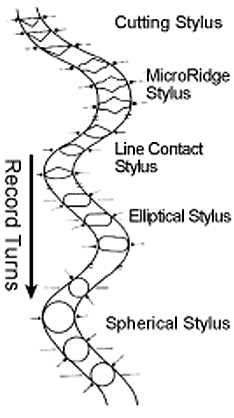Hi, thanks for quoting my thread on stylus shapes.
As the years have passed, i've realized that, perhaps, the cantilever might have a greater deal of influence in the sound than the stylus shape.
The cantilever is what carries the signal (modulation) to the magnet/coil/generating ring. the mechanical anomalies in that beam are also being relayed to the magnet/coil/generating ring
However, at the inner grooves, and/or with a worn record, the stylus shape will have a marked influence. Not to mention something that I didn't mention on the thread: for some reason, the conical stylus tends to give lower surface noise, or at least it seems to me empirically.
The vast amount of surface noise is vertical information. sum both channels, and surface noise goes down dramatically. loudness and duration of pops and ticks is micro mis tracking, to macro mis tracking (duration of time). the stone and it's shape has nothing to do with that, the cantilever and suspension do. if its not moving, no electricity is being generated. the louder and longer you hear album surface anomalies the longer the cantilever is swinging in free air, and or the mechanical anomalies of the cantilever.



